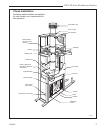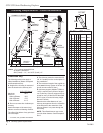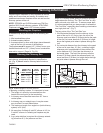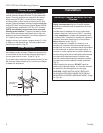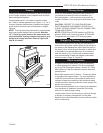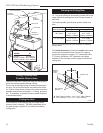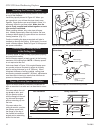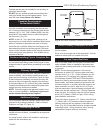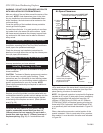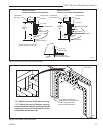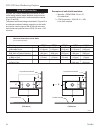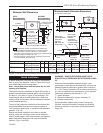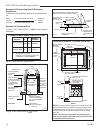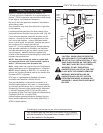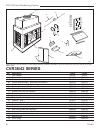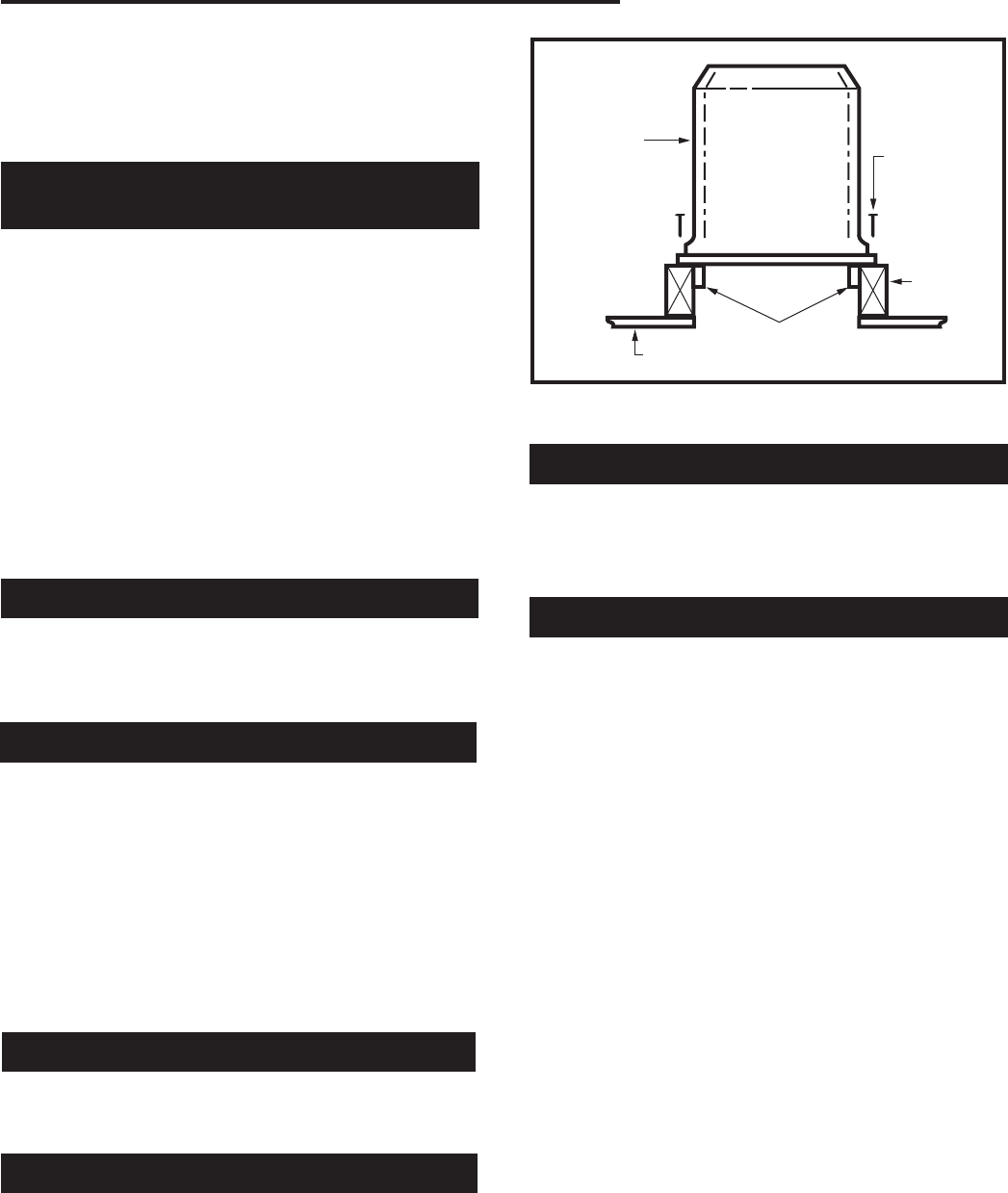
13
STR/CVR Series Woodburning Fireplaces
7412961
Locate Chimney Centerpoint on Roof
Use same procedure detailed in locating centerpoint of
the flue system.
Drive a nail up through roof at the centerpoint. This will
determine center point on outside of the roof.
Cut and Frame Roof Hole
Size of roof hole varies with the type of chimney termi-
nation installed. Refer to installation instructions pro-
vided with the chimney termination to find correct size
of roof hole.
NOTE: The air space dimensions in this manual
that pertain to model 11CF chimney pipe have been
changed from 2" to 1" (51 - 25mm) clearance for first
joist space only. This change only applies to Majes-
tic Fireplaces models STR42 and CVR42 fireplaces.
Because of framing concerns these models, and only
these models, have been tested and approved at the
reduced clearance. In all other cases the minimum air
space referred to on the UL label on the 11CF pipe
must be maintained. A special firestop is shipped with
these units that will maintain the 1" (25mm) clearance
at the first joist. The chimney hole size for this firestop
will be 15¹⁄₂" (394mm). Refer to Figure 18 for ceiling
joist installation instructions.
There must be an air space (1¹⁄₂" (38mm) with SK8 and
1" (25mm) with 11CF) between outermost portion of
chimney sections and any adjacent combustible sur-
faces. (Fig. 20) (Combustible surfaces include burnable
materials such as: ceiling members, joists, flooring,
combustible insulation and roof structures.)
Firestop spacers are not available for nor are they re-
quired on vertical walls.
DO NOT put any sealant around the area where the
outer pipe slides through the firestop spacer. If you
seal this area, it may cause a fire hazard.
Canadian Requirements
for Insulation Shield
In Canada, an attic insulation shield is required to pre-
vent attic insulation from contacting the chimney sec-
tion. Framing dimensions for the chimney hole should
measure 14¹⁄₂" x 14¹⁄₂" (368 x 368mm)(SK8). (An attic
shield MUST be installed on top of attic joists (above
the floor level). (Fig. 19)
NOTE: In the U.S., it is a good idea, although not al-
ways required, to install an attic insulation shield where
blown-in insulation is planned to be used in the attic.
Install the attic insulation shield with the flanges on its
base extending down into the framing hole. Nail each
corner of attic insulation shield to the framing members
of the ceiling hole using 8d nails. Attic shields are not
required at the roof.
Continue Installing Pipe to Complete Run
Continue attaching pipe sections to complete system
to next level always being careful that the pipe is firmly
snapped locked in place before proceeding to next pipe
section.
Chimney Supports
If chimney supports are required, they are installed the
same as elbows. Nail chimney support straps to ad-
jacent structural framing, as shown on Figure 8, Page
8. Bend straps as necessary and make sure they are
secure so they will support the weight of the chimney.
A chimney support is 2¹⁄₂" (64mm) long when installed.
Consider this dimension when determining how many
straight chimney sections are needed.
NOTE: Chimney supports are generally used in long
runs in a chase installation. A chimney support can-
not be mounted directly to the fireplace.
Additional Ceilings
If you encounter additional ceilings, repeat same steps
required for first ceiling installation. Refer to firestop
illustration on Page 12, Figure 18.
Penetrating the Roof
Run pipe to roofline. Since chimney system must be
vented to the out-of-doors, you must use an approved
termination.
If a chase is used, refer to the installation manual pro-
vided with the termination cap.
FP263
Fig. 19 Attic shield installlation (Canadian requirement).
IGF263
MBUF
5/9/96
Attic Insula-
tion Shield
Nails
(4 required)
Attic Joist
Ceiling
Base
Flanges



